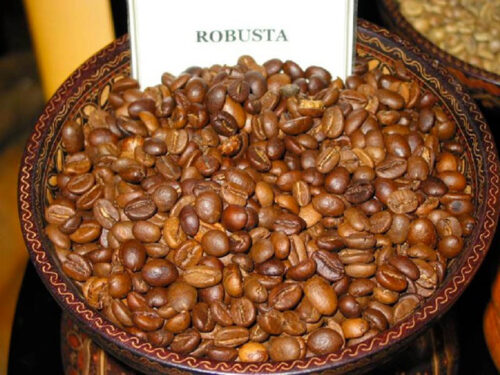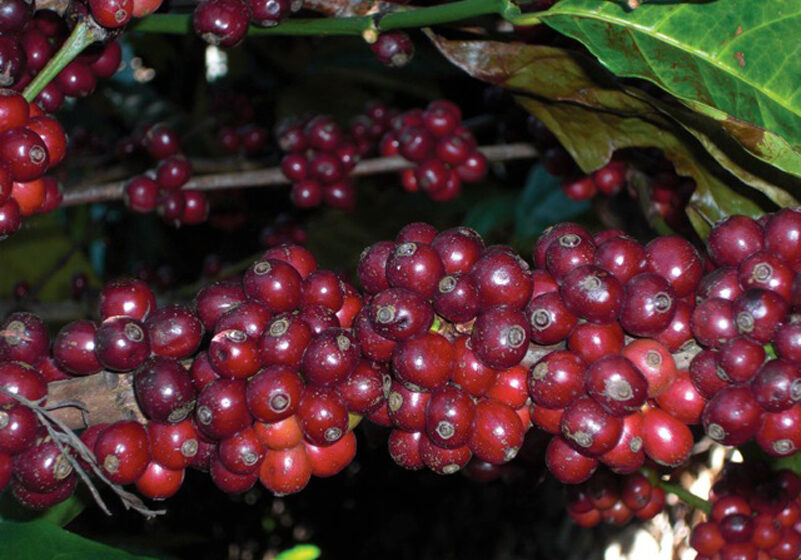[R]obusta has long carried the stigma of representing the generic half of coffee, mass produced, destined for factories run by the likes of Kraft but not allowed anywhere near a conversation about high-end Arabica. The mass-production rap was always a bit unfair, considering just a few years ago, Robusta accounted for thirty percent of the world’s coffee. Now, thanks almost entirely to Vietnam, Robusta makes up about forty percent of all coffee. While that increased production could have meant simply more commodity beans, it’s been accompanied by a rise in quality for the maligned beans.
As with Arabica, there is a variety of Robustas and grades of quality. A fine Robusta can display notes of nut butters, caramel, and cedar. Others hold impressions of vegetable oil, rubber, peanut shells, grass, and horsehair. Even this less desirable Robusta tasting of oil and grass can play well in a blend. Generally a Robusta of this nature will need a chocolaty companion from Brazil, Peru, or El Salvador to help highlight and enhance its positive aspects. The nuttiness and rounder qualities will amplify and draw out the sweeter, chocolate notes of the Central and South American coffees. I’ve had great experiences with a blend of organic Robusta with Arabicas from Brazil and Ethiopia all mingling into a chocolate-covered blueberry with bite and bold body.
In a fully washed and polished Robusta you will find subtlety and nuance, sweetness and notes of chocolate and cardamom with a much cleaner finish.
Robusta’s are generally graded as G1, G2, and then further defined by screen size. Each country has its own grading scale, sometimes 0–4 or 0–6, based on screen size and defect count. The better grades are still G1 and G2, however Robustas are further specified as washed, semi-washed, or polished processes. The basic cup difference between, for instance, a Vietnamese G1 and G2 screen 13–15 is not that big. Both the G1 and G2 tend to be a bit wild tasting with a grassy sour acidity. The big difference is when you get into washed and polished Robustas. These processes are an indicator of quality because the more attention they received the better chances they’ve been rigorously sorted. In a fully washed and polished Robusta you will find subtlety and nuance, sweetness and notes of chocolate and cardamom with a much cleaner finish.

You will never find the acidity of an Arabica in Robusta, but that isn’t their role. They are meant to balance Arabica’s sharp acidity with round earthy, nutty notes and sweetness while adding body and mouth-feel. I am always impressed at how well Robustas play with others.
There are of course special considerations when dealing with these coffees. One, their bean density is much lower so they roast at a faster rate than SHB Arabica. They also require a light touch when blending. Just as a strong, high-acid Ethiopian can overwhelm a blend, so to can a G1 natural Robusta. Finally, they do contain about double the amount of caffeine as most Arabicas, so a Robusta-only blend could be physically unpleasant to someone who is not used to drinking such high caffeine content.
With efforts in Robusta-growing countries to replicate specialty Arabicas successes and the rise of the R Grader curriculum, the quality of growing, sorting, and processing today’s Robustas means they can really add a boost to any blend.
—Jake Leonti is a writer and food and beverage advisor in New York City.
















